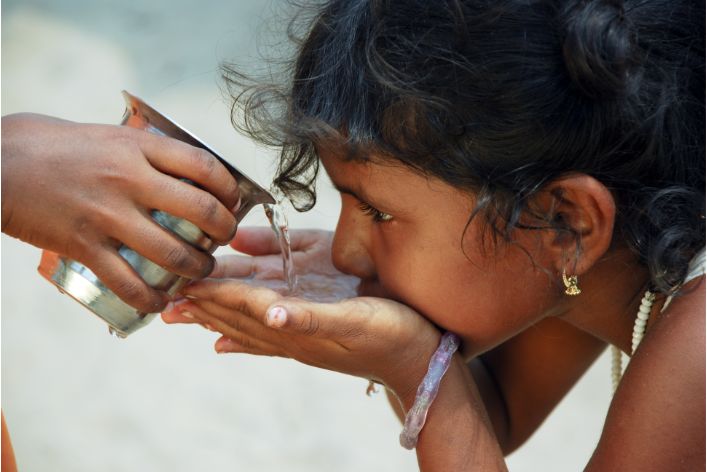Introduction
Access to clean water and sanitation is vital for preventing illnesses, improving health, and breaking the cycle of poverty. Over 2.2 billion people lack safe drinking water and 4.2 billion lack basic sanitation. Children are especially vulnerable to waterborne diseases and growth issues without proper access.
Taking action is crucial to ensure all children have clean water and sanitation for healthy growth. We must collaborate to build sustainable systems, promote hygiene education, and provide necessary services to those in need. Investing in clean water and sanitation safeguards children’s health and creates a brighter future for all.
Why Clean Water and Sanitation are Important for Child Health
Child health is one of the most critical issues that require the utmost attention in modern societies. One of the primary factors that contribute significantly to child health is the availability of clean water and proper sanitation.
However, despite the perceived importance of clean water and sanitation, millions of children in various parts of the world continue to suffer due to a lack of access to these basic amenities.
Let’s discuss the importance of clean water and sanitation for child health by highlighting the adverse effects of contaminated water on child health, the link between lack of sanitation and child mortality rates, and the benefits of clean water and sanitation for child health.
Adverse Effects of Contaminated Water on Child Health
Contaminated water is a significant risk factor for child morbidity and mortality. When children drink contaminated water, they become vulnerable to various waterborne diseases such as cholera, diarrhea, and typhoid fever. These diseases, in turn, weaken their immune system, making them susceptible to other diseases.
More so, contaminated water can cause dehydration, a severe condition that can lead to death if left untreated. Children are particularly vulnerable to dehydration due to their low body weight and rapid metabolism.
Link Between Lack of Sanitation and Child Mortality Rates
High child mortality rates are associated with the lack of proper sanitation, according to the World Health Organization.
Annually, poor sanitation and hygiene contribute to over 500,000 deaths of children under five due to diarrhea.
The absence of sanitation facilities like toilets, hand-washing stations, and safe waste disposal promotes the spread of diseases such as cholera, typhoid fever, and dysentery.
Additionally, inadequate sanitation facilities can put children, especially girls, at risk of sexual violence and other crimes.
Benefits of Clean Water and Sanitation for Child Health
Access to clean water and proper sanitation can significantly improve child health outcomes. One of the primary benefits of clean water and sanitation is the prevention of waterborne diseases. When children have access to clean water, they stay hydrated and are less prone to illnesses that result from dehydration.
In addition, good sanitation practices like the use of toilets and hand-washing stations can prevent the spread of diseases. Good sanitation also ensures that children can live in a safe and hygienic environment, thereby promoting their overall well-being.
Another benefit of clean water and sanitation is that they can help improve school attendance. Access to clean water and proper sanitation facilities in schools can make a significant difference in promoting regular attendance.
Proper sanitation facilities in schools increase girls’ attendance and reduce their risk of disease and health issues.
Parenting Made Just for You
Get personalized Parenting Solutions tailored to your child’s needs. Transform your parenting journey with expert guidance in 1-3 days.
Get StartedAccess to clean water and sanitation is essential for children’s health. We must make efforts to ensure universal access to these amenities.
Governments, civil society organizations, and stakeholders should collaborate to provide clean water and sanitation facilities to children.
Investing in water supply and sanitation infrastructure will reduce child morbidity and mortality rates and promote a healthy population.
Read: How to Manage Picky Eating Among Nigerian Children
The Global Scenario of Clean Water and Sanitation
The global scenario of clean water and sanitation is a grave concern that affects millions of lives every day. Despite significant strides in technological innovations and advancements, there is still a significant proportion of the world’s population that lacks access to clean water and sanitation facilities.
Current Global Status of Access to Clean Water and Sanitation
- According to the United Nations (UN), an estimated two billion people worldwide lack access to safe, clean, and sustainable drinking water.
- About 4.2 billion people across the globe are not equipped with sanitation services, according to the World Health Organization (WHO).
- About 80% of illnesses in developing countries are due to poor water and sanitation conditions, which can result in illnesses like cholera, dysentery, and typhoid fever.
- About 1.5 million children under five years of age die yearly, mainly due to diseases caused by inadequate access to clean water, sanitation, and hygiene.
Regions and Countries with Acute Lack of Clean Water and Sanitation
- In Sub-Saharan Africa, more than 40% of the population lacks access to clean water, while over 70% lack access to sanitation facilities.
- In Asia, millions of people live without access to clean water and sanitation, especially in rural areas.
- Around half of the population of India does not have access to toilets or safe drinking water, leading to numerous health problems.
- In several Middle Eastern countries such as Yemen, Syria, and Iraq, decades of conflict have destroyed water and sanitation infrastructure, leaving millions without access to clean water and sanitation facilities.
Efforts by Global Organizations to Improve Access to Clean Water and Sanitation
- The UN has set a goal to ensure access to clean water and sanitation for all by 2030 under its Sustainable Development Goals (SDGs).
- The World Bank has launched a $8.2 billion initiative to assist countries in improving access to clean water and sanitation facilities.
- Organizations like Water.org and Charity: water has been successful in funding efforts to build wells and improve access to water in developing countries.
- The WHO and UNICEF launched the Joint Monitoring Programme for Water Supply and Sanitation to monitor global efforts towards increasing access to clean water and sanitation facilities.
In general, poor access to clean water and sanitation facilities remains a major health concern and a violation of basic human rights.
Global organizations and dedicated individuals have made significant contributions to progress in ensuring universal access to clean water and sanitation.
Therefore, it is crucial to prioritize and invest in implementing more effective and sustainable interventions to improve access to these facilities.
Read: Balanced Diet for Kids: Nigerian Meals Edition

The Role of Caregivers and Communities in Safeguarding Child Health with Clean Water and Sanitation
Safeguarding child health requires clean water and sanitation, which is crucial. UNICEF states that approximately 2.2 billion people lack safe drinking water, and 4.2 billion lack basic sanitation services.
Children under 5 face high vulnerability to waterborne diseases like diarrhea, cholera, and typhoid fever, which can be fatal if untreated.
The role of families and caregivers in ensuring access to clean water and sanitation for children
Caregivers, including parents and guardians, play a crucial role in promoting and maintaining good hygiene practices that protect children from waterborne diseases.
Some of the ways in which families can safeguard child health with clean water and sanitation include:
- Ensuring that their children have access to clean drinking water at all times
- Promoting handwashing with soap before eating, after using the bathroom, and after playing outside
- Using proper sanitation facilities such as toilets and latrines to prevent the spread of disease
- Disposing of waste properly and not polluting water sources through open defecation
By adopting these practices, families can protect children’s health and contribute to the overall well-being of their communities.
The Importance of Community-Based Interventions and Initiatives to Improve Access to Clean Water and Sanitation
Achieving universal access to clean water and sanitation requires community-based interventions and initiatives that involve collective action. Communities can pool resources and work together to address common challenges in accessing these basic services, ensuring every child’s well-being.
Unveil the Perfect Name that Tells Your Family's Story
Let us help you find a name that embodies your family's values, traditions, and dreams. Our personalized consultation weaves cultural insights to create a name that's uniquely yours.
Get StartedCommunity-based interventions and initiatives can take many forms, such as:
- Providing access to safe water sources through the construction of wells, boreholes, and other water sources
- Building or rehabilitating sanitation facilities such as latrines and toilets
- Implementing hygiene education programs that promote handwashing and other good hygiene practices
- Training community members to maintain and repair water and sanitation infrastructure
Through these efforts, communities can create sustainable solutions that improve the health and well-being of their members, especially children.
Successful community-driven initiatives in different regions of the world
Community-driven initiatives have been successful in improving access to clean water and sanitation in many parts of the world.
Here are just a few examples:
- Bangladesh: In Bangladesh, the government and NGOs have launched a campaign to increase access to improved sanitation facilities, with the goal of providing a toilet for every household in the country. The “Community-Led Total Sanitation” approach encourages communities to take ownership of the sanitation process, including planning, financing, and construction.
- Kenya: In Kenya, the “Clean Water for Kids” initiative has helped to improve access to clean water and sanitation in rural communities. Through the use of sustainable water purification technologies and community education programs, the initiative has provided safe drinking water to over 200,000 people in the region.
- Brazil: In Brazil, the “One Million Cisterns” program has helped to bring clean water to families in the country’s semi-arid northeast region. The program provides rainwater harvesting systems to households that lack access to piped water, helping to ensure a reliable source of clean water throughout the year.
Access to clean water and sanitation is a fundamental human right, and it is essential to safeguarding child health. While families and caregivers can take steps to protect their children, community-based interventions and initiatives are necessary to ensure universal access to these services.
Through collective action, communities can create sustainable solutions that improve the health and well-being of future generations.
Read: Optimizing the Immunity of Your Child Through Nutrition
Conclusion
Access to clean water and sanitation is critical for safeguarding child health. Lack of access can lead to waterborne illnesses, malnutrition, and stunted growth.
Improving water and sanitation infrastructure, promoting hygiene education, and managing waste properly are crucial for ensuring child health.
Individuals and communities must recognize the importance of clean water and sanitation and support relevant organizations. We have a responsibility to ensure children have access to these basic necessities. Investing in clean water and sanitation benefits both children and society as a whole.
Join us in advocating for clean water and sanitation for all children, everywhere.




